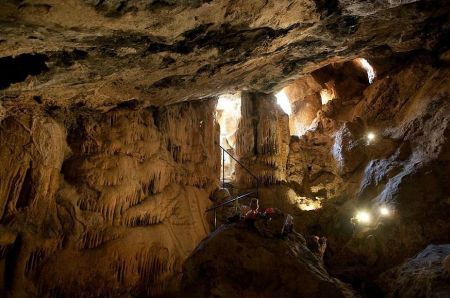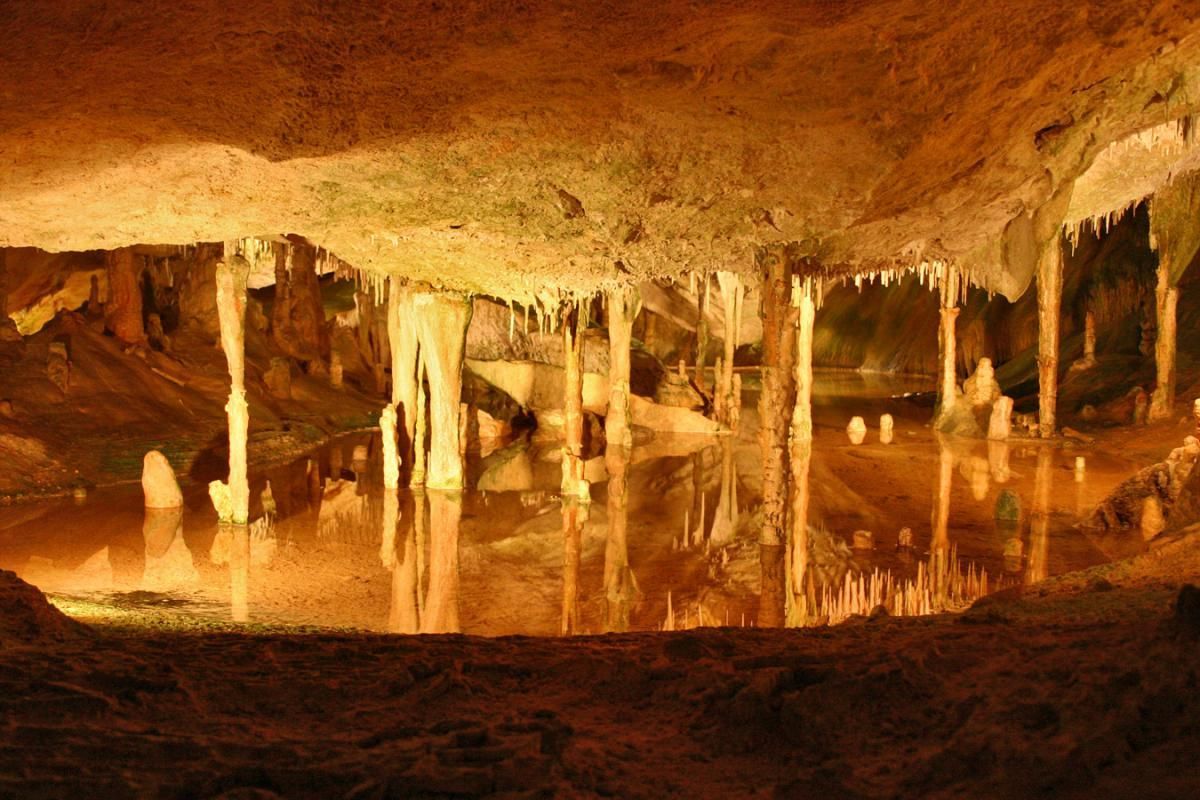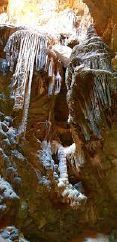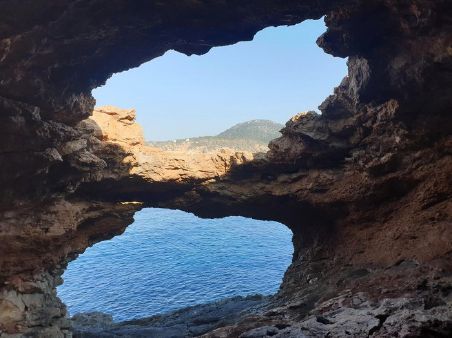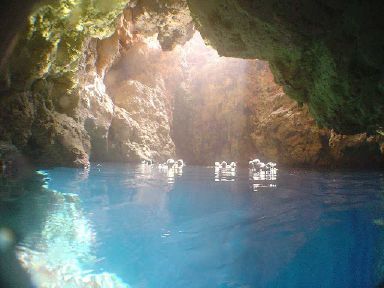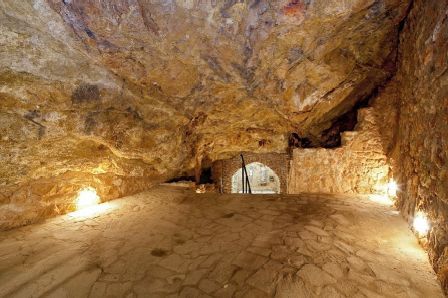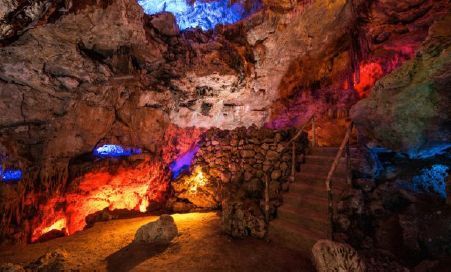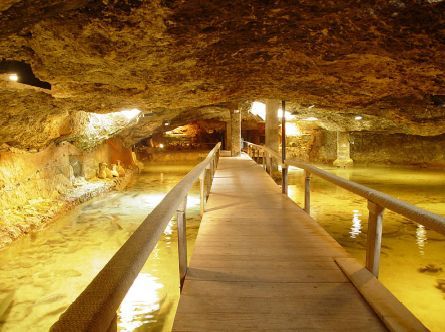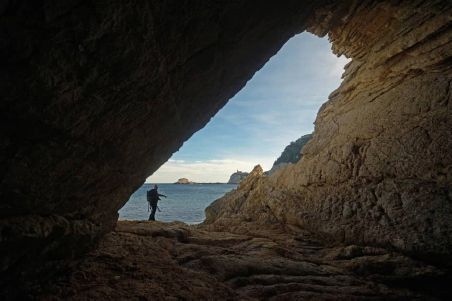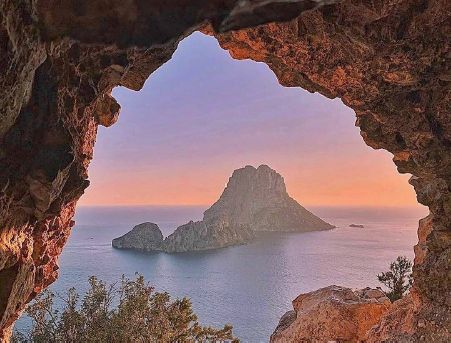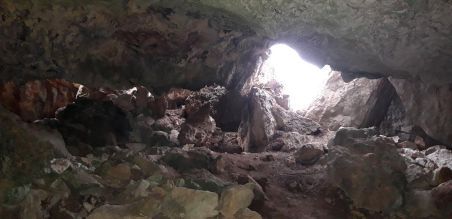Caves

Discover the hidden Ibiza Caves
Explore the hidden treasures and ancient formations that lie beneath the surface of this breathtaking island.
Caves of San Juan
The region of San Juan, or Sant Joan de Labritja, situated in the northern part of Ibiza, stands out for its breathtaking natural landscapes. Encompassing 121 km of diverse terrain, it features semi-wild beaches with pristine waters, pine forests, and majestic mountains. This area is particularly well-suited for activities like hiking, and it boasts several captivating caves that are definitely worth exploring.
Club Guide
Cave of Es Culleram or es Cuieram
The Es Culleram Cave, also known as the Es Cuieram Cave, served as a significant ancient Phoenician-Punic sanctuary devoted to the Phoenician god Melkart and the Carthaginian goddess Tanit, associated with fertility and fortune. This sanctuary flourished from the late 6th to the 2nd century BC. Numerous votive figures of the goddess Tanit and Bronze Age artifacts discovered during archaeological explorations, initiated in 1907, are now on display at the Archaeological Museum and the Monographic Museum of Puig des Molins in Ibiza.
Where: 3HMJ+26, 07810 Cala de Sant Vicent, Illes Balears, España
Club Guide
Cova de Can Marca
The Can Marçà Cave, also known as the Cave of San Miguel, is situated in a stunning natural setting adjacent to a viewpoint offering panoramic vistas of the Ferradura and Murada islets, as well as the Torre d'es Mular, on the cliffs of Puerto de San Miguel.
This ancient limestone cave, formed more than 100,000 years ago due to telluric faults, boasts captivating features such as underground lakes, waterfalls, streams, and remarkable rock formations, including stalagmites and stalactites.
Address: Cueva de Can Marsa, Port de Balansat, 07815 Puerto de San Miguel
Club Guide
Cova Des Sants
The Cova des Sants, also known as the Cave of the Saints, remains a hidden gem on the island, relatively unknown to both locals and tourists due to the challenging hiking trail leading to it. Despite the trail's difficulty, the cave offers breathtaking views that make the journey worthwhile.
To reach the cave, you must follow a path starting from Port de ses Caletes, leading to a parking area and eventually a pebble beach with crystal-clear waters. From the beach, a somewhat demanding trail awaits, requiring good physical fitness as you navigate a rocky path to reach the cave. At times, you may even encounter stretches that involve climbing.
The cave is shallow, with natural light streaming in through a sizable opening about 20 meters high. This, combined with its stalactites, creates a visually stunning appearance. However, it's important to note that access to the cave's interior may involve climbing in certain sections, making it less suitable for everyone.
Club Guide
Cova De Llevant
Situated between Cala Xarraca and Es Canaret, you'll discover the enchanting Cova de Llevant or Levante Cave. Nestled in a rocky area overlooking the sea, the cave is comprised of various hollows, featuring a captivating column at its center. The journey to reach this site is straightforward, offering picturesque views. However, it's advisable to exercise caution regarding mosquitoes, as their presence can be quite abundant within the cave.
Club Guide
Cave of Light
This clandestine destination stands as one of the most secluded and enigmatic spots on the entire island. Its name, "Cueva de la Luz," alludes to the sunlight filtering into the cave. Once inside, the sole means of exit involves submerging through an underwater gallery that remains permanently flooded.
Accessing this cave proves challenging, whether by land or sea, as reaching it entails navigating an unmarked trail for nearly two hours through dense forests and rugged cliffs. Therefore, prior diving experience and expert guides are strongly recommended.
The initial portion of the journey follows a dirt path, later transitioning into a derelict stone trail constructed to facilitate access to a now dilapidated dwelling. Along this route, a small spring emerges. Eventually, the path disappears, requiring a cautious descent to reach the elusive Cueva de la Luz.
Where: Carrer del Penya-Segat, 9, 07730 Cala en Porter, Illes Balears
Club Guide
Cave de Santa Agnès
This subterranean chapel holds the distinction of being recognized as the oldest church in Ibiza. The cavern served as a sanctuary, witnessing Christian and subsequent Arab worship during the 3rd and 4th centuries. In the early 19th century, its usage ceased due to the risk of collapses. However, the cave was rediscovered in 1907 and underwent restoration in 1981.
Presently, the cave is privately owned and remains closed to the public. Adjacent to it stands the hermitage of Santa Inés, an un-consecrated temple transformed into the intriguing Sa Capella restaurant.
Address: Carretera de Santa Agnès, km. 0,6. Sant Antoni de Portmany
Club Guide
Cova Santa
Embedded in the myth of Ibiza, this cave has been a storied pirate refuge since its inception. Unearthed in the 15th century, it was unveiled to the public in 1957.
Accessible through a mountain fissure, a captivating grotto awaits, leading to a cave over 25 meters deep, adorned with intricate stalactites and stalagmites. Evolving since the early 1990s, Cova Santa has transformed into a picturesque setting for events, a dining destination, and a venue for captivating dinner shows.
Address: Ctra. San José, km 7 (desvío Sa Caleta), 07817 Ibiza
Club Guide
Cave Ses Llagostes
Within this distinctive cave transformed into an aquarium, named Aquarium Cap Blanc, an array of marine life native to the region awaits your observation. From sharks to rotjas, groupers, and graceful manta rays, a diverse aquatic community thrives within the confines of this natural cave.
Where: Ctra. de Cala Gració, s/n, 07820 Sant Antoni de Portmany, Ibiza
Where: Visit on Saturdays from 10:00hs to 13:00hs
Club Guide
The Inclined Cave of Ibiza
Sa Punta des Forn reveals the geological phenomena and deformations that shaped the island of Ibiza during the Jurassic period.
Its distinctive feature lies in the rock formations extending into the sea, resembling a spear. Notably, there's a fascinating inclined cave within, featuring walls seemingly crafted from layers of stone. The cave floor exhibits patterns reminiscent of the solidified curves left behind by lava. Within these curves' crevices, seawater accumulates, leading to the formation of salt crystal sheets, resembling miniature ice rinks. Geologist Luis Alberto Totón notes, "They are materials from the Kimmeridgian," marking one of the final stages of the Jurassic period.
Where: Between Punta des Jonc and Punta Grossa, Ibiza
Where: It’s open all day
Club Guide
Sa Cova Des Vi / Cave de Ses Fontanelles
Known as Sa Cova des Vi (Wine Cave), Ses Fontanelles cave had a unique role as a winery, using its cooling walls to preserve wine from souring in the heat.
Within this captivating cave, a hidden gem lies beneath its stony exterior—a modest collection of cave paintings. Dating back to the Bronze Age (around 1,000 years BC), these drawings depict ships and were discovered by French archaeologist Henri Breuil in 1917.
The allure of the excursion extends beyond the historical artifacts. The journey is enriched by the stunning cliffs, offering panoramic views of Cala Salada's coastline, the bay of Sant Antoni, and the picturesque islets to the west.
Where: Diseminado Cala Salada, 45058, 07820, Illes Balears, España
Where: Close (visitor’s permit required)
Club Guide
Cova Mirador Es Vedra
Nestled along the path to the Pirate Tower, this secretive hippy cave unveils one of the most breathtaking views of Ibiza—none other than the nature reserve of Es Vedra.
This mystical cave isn't available for rent or purchase; it remains unclaimed by any owner. Serving as an entrance to the extensive rock formations at the tip of Sa Pedrera in Ibiza, access to this hidden gem is limited to those in the know or fortunate enough to be guided by one of the island's privileged residents.
Where: Next to Cap Blanc, 07830 Ibiza
Where: Open 24 hours
Club Guide
Treasure caves – Cap des Mossons
In an island where the line between history and legend blurs, the caves of Cap des Mossons in Mola d´Albarca have drawn treasure hunters for centuries. Local lore suggests that these caves served as a refuge during the Civil War and, much like numerous other caves across the Pitiusas landscape, were hideouts for smugglers. The challenging access, hindered by the cliffs, made them particularly suitable for such clandestine activities.
Club Guide
Cova des Pi
Typically encountered first on the route, this cave is situated just below the remains of a shelter used by charcoal storage workers, accompanied by the presence of a prominent fig tree.
Club Guide
Cova d’en Jaume Orat
The most renowned among them, Cova d’en Jaume Orat, unveils an ancient square sieve akin to those employed by gold prospectors, offering an initial glimpse into the history of this site.
A subject of investigation for speleologists and paleontologists, a 1983 campaign, subsidized by the Consell, revealed around 250 m2 filled with substantial layers of earth. This cave has contributed significantly to the paleontological record of the Ibizan Pleistocene, yielding fossil records of various new species. The findings encompassed birds, reptiles, and gastropods (although no mammals), with 287 identified specimens. It is suggested that the birds might have used the cave for nesting purposes.
Club Guide
Cova de ses Estelles
Evidence of sporadic habitation in the caves has been uncovered, including fragments of artifacts such as a pot possibly dating back to the Bronze Age, remnants of amphorae from the late Punic period, and a section of an African terra sigillata cup dating to the 2nd century.
Club Guide
The Llibrell cave
Named after a pool formed by trickling water at its entrance, this cave is identified by a rope fastened to two junipers, also serving as a means to traverse to the other side of the rocky wall behind which the cavern lies. Among the more challenging to locate and access, it stands out as possibly the most spectacular, boasting two balconies on the cliff's edge that provide breathtaking views of the cove.
Where: Cap des Mossons, 07830 Ibiza
Where: Open 24 hours

